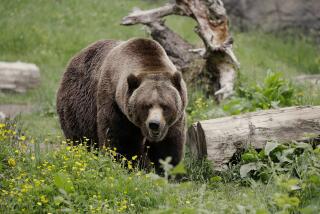Wildly wrong
Even when the U.S. Fish and Wildlife Service did the right thing by the gray wolves of the northern Rockies, it managed to do the wrong thing. A 13-year effort to reintroduce the wolf to the region has been an extraordinary success, with the count increasing from an initial 66 to a stable and growing population of more than 1,500.
Numbers like those clearly invited a call for taking the wolves off the endangered species list. But instead of just delisting them in March, the federal agency virtually abandoned them, allowing the three states where most are found -- Wyoming, Idaho and Montana -- to devise management plans that were more about hunting the wolves than protecting them. Their numbers would have had to shrink to 300 before the federal government would step in again, in essence unraveling millions of dollars worth of reintroduction work.
After environmentalists sued, a federal judge restored full endangered species status to the wolves last month. U.S. District Judge Donald W. Molloy found that the Fish and Wildlife Service hadn’t followed its own rules for delisting the wolves and making sure they would thrive.
Molloy’s ruling came none too soon. Within a month of the delisting, at least 35 wolves had been killed, mostly by hunters who resented the competition from the animals, which prey on the same deer and elk the human hunters would like to bag. Environmentalists say an additional 70 or so wolves have been killed since. Meanwhile, all three states have been mulling plans for full-on trophy hunting of wolves come fall. This is not why U.S. taxpayers spent $27 million to bring the gray wolves back.
It shouldn’t take continual lawsuits to get the Fish and Wildlife Service to fulfill this central mission. And yet the agency is at it again over the wolverine, a ferocious member of the weasel family whose numbers in the Lower 48 states have fallen to 500 or fewer -- most living in the three states where the gray wolf was reintroduced. Just as the wolf was being delisted, the agency was refusing to list the wolverine.
Its reasoning was curious: There are healthier, flourishing populations of wolverines outside the contiguous 48 states, notably in Canada. If that were the sole criterion for staying off the species protection lists, the grizzly bear and bald eagle would have been denied protection as well. And, for that matter, so would the gray wolf.
More to Read
Sign up for Essential California
The most important California stories and recommendations in your inbox every morning.
You may occasionally receive promotional content from the Los Angeles Times.










